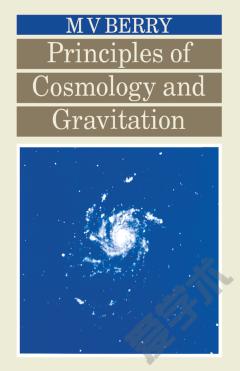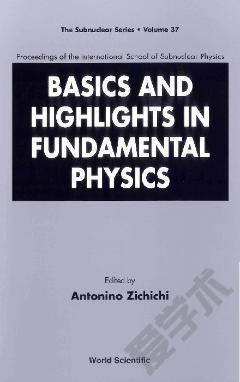Causation and Its Basis in Fundamental Physics
1 Empirical Analysis and the Metaphysics of Causation 1.1 Empirical Analysis 1.1.1 The Distinctive Features of Empirical Analysis 1.2 Empirical Analysis of the Metaphysics of Causation 1.2.1 Effective Strategies 1.3 Empirical Analysis of the Non-metaphysical Aspects of Causation 1.4 Causation as Conceptually Tripartite 1.5 A Sketch of the Metaphysics of Causation 1.6 Fundamental and Derivative 1.6.1 The Kinetic Energy Example 1.6.2 Some Constitutive Principles of Fundamentality 1.7 Abstreduction 1.8 STRICT Standards and RELAXED Standards 1.9 Limitations on the Aspirations of Empirical Analysis 1.10 Comparison between Empirical Analysis and Orthodox Analysis 1.11 Summary I THE BOTTOM CONCEPTUAL LAYER OF CAUSATION 2 Fundamental Causation 2.1 Preliminaries 2.1.1 Events 2.1.2 Laws 2.2 Terminance 2.2.1 Causal Contribution 2.2.2 Trivial Terminance 2.3 The Space-time Arena 2.4 Classical Gravitation 2.4.1 Galilean Space-time 2.4.2 Terminants in Classical Gravitation 2.4.3 Overdetermination in Classical Gravitation 2.4.4 Instantaneous Causation 2.5 Relativistic Electromagnetism 2.5.1 Minkowski Space-time 2.5.2 Minimal Terminants in Relativistic Electromagnetism 2.5.3 Classical Unified Field Theory 2.6 Content Independence 2.7 Continuity and Shielding 2.8 Transitivity 2.9 Determinism 2.10 Stochastic Indeterminism 2.10.1 Stochastic Lattices 2.10.2 A Toy Theory of Particle Decay 2.11 Non-stochastic Indeterminism 2.11.1 Newtonian Indeterminism 2.11.2 Contribution Extended 2.12 General Relativity 2.12.1 Spatio-temporal Indeterminism 2.12.2 Closed Time-like Curves 2.13 Quantum Mechanics 2.13.1 The Quantum Arena and its Contents 2.13.2 Bohmian Mechanics 2.13.3 Spontaneous Collapse Interpretations 2.13.4 Other Interpretations of Quantum Mechanics 2.14 Summary II THE MIDDLE CONCEPTUAL LAYER OF CAUSATION 3 Counterfactuals and Difference-making 3.1 General Causation 3.2 Counterfactuals 3.3 Goodman's Account of Counterfactuals 3.4 The Nomic Conditional 3.5 Comparison to Ordinary Language Conditionals 3.6 Prob-dependence 3.7 Contrastive Events 3.8 Summary 4 Derivative Causation 4.1 Influence 4.2 Prob-influence 4.3 General Causation 4.4 Temporally Extended Events 4.5 Idiomatic Differences between Promotion and Causation 4.6 Aspect Promotion 4.7 Promotion by Omission 4.8 Contrastivity 4.9 Transitivity 4.10 Continuity 4.11 Shielding 4.12 Partial Influence 4.13 Summary 5 The Empirical Content of Promotion 5.1 The Promotion Experiment 5.2 Insensitivity Considerations 5.3 Thermodynamics and Statistical Mechanics 5.4 The Asymmetry of Bizarre Coincidences 5.5 The Analogy to Thermal and Mechanical Energy 5.6 Broad and Narrow Promotion 5.7 Inferences from Empirical Data to Claims of Promotion 5.7.1 Simpson's Paradox 5.8 Why There are Effective Strategies 5.9 Mechanistic Theories of Causation 6 Backtracking Influence 6.1 The Direction of Influence 6.2 Proof of Causal Directness 6.3 A Search for Empirical Phenomena Behind Causal Directness 6.4 'Past-directed then Future-directed' Influence 7 Causal Asymmetry 7.1 The Empirical Content of the Causal Asymmetry 7.2 Causation and Advancement 7.3 An Explanation of the Advancement Asymmetry 7.3.1 Prob-influence through Backtracking 7.3.2 Directly Past-directed Prob-influence 7.3.3 Summary 7.4 Pseudo-backtracking Prob-influence 7.5 The Entropy Asymmetry and Causal Directionality 7.6 Recent Alternative Explanations of Causal Asymmetry 7.6.1 The Albert-Kutach-Loewer Approach 7.6.2 The Price-Weslake Approach 7.6.3 The Fork Asymmetry Approach 7.7 Fundamental Influence Asymmetry 7.7.1 Fundamental Influence Asymmetry by Fiat 7.7.2 Fundamental Influence Asymmetry by Happenstance 7.8 Summary III THE TOP CONCEPTUAL LAYER OF CAUSATION 8 Culpable Causation 8.1 The Empirical Insignificance of Culpability 8.1.1 Part I: Singular Causation 8.1.2 Part II: General Causation 8.2 Culpability as a Heuristic for Learning about Promotion 8.3 Culpability as an Explanatory Device 8.4 Culpable Causes as Proxies for Terminants and Promoters 8.5 Commentary 9 The Psychology of Culpable Causation 9.1 The Toy Theory of Culpable Causation 9.2 Culpability1 9.2.1 Salience 9.2.2 Irreflexivity 9.2.3 Asymmetry 9.2.4 Significant Promotion 9.3 Shortcomings of Culpability1 9.3.1 Precise Character of the Effect 9.3.2 Overlapping Causation 9.3.3 Probability-Lowering Causes 9.4 Culpability2 9.5 Shortcomings of Culpability2 9.5.1 Saved Fizzles 9.5.2 Early Cutting Preemption 9.5.3 Late Cutting Preemption 9.6 Culpability3 9.7 Culpability4 9.8 Summary 10 Causation in a Physical World 10.1 Summary 10.2 Future Directions References
{{comment.content}}








 京公网安备 11010802027623号
京公网安备 11010802027623号